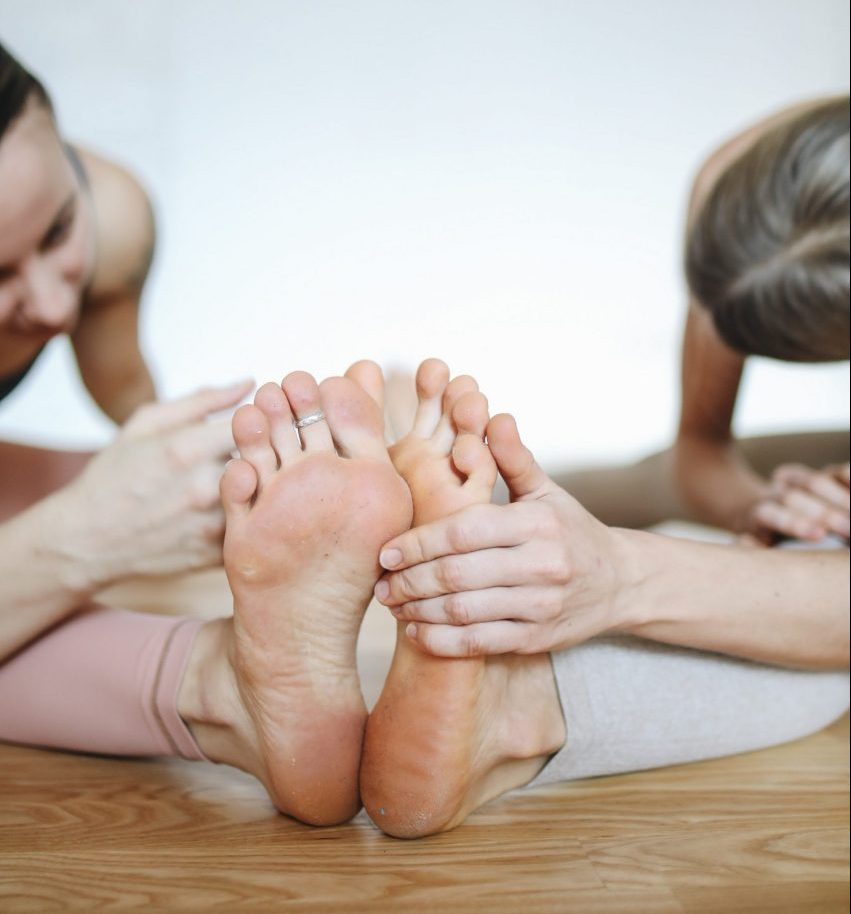Corns and Calluses
Corns and calluses are thick, hardened layers of skin which can cause pain and tenderness. This can happen if your skin is trying protect itself against friction and pressure.
You can often tell a corn by looking at it. Usually, a corn is a lump of hard skin that is regularly exposed to rubbing or pressure and they can be painful. Calluses are often larger and are rarely painful.
Rachel Miller is a highly experienced chiropodist and podiatrist who treats many patients for corns and calluses. Please see below if you want more detailed explanation of corns and calluses, their symptoms, causes and treatment.
Contact the Centre for an appointment on 020 8348 5553
Corns
Corns are smaller than calluses and have a hard center, called a core, surrounded by inflamed skin. Corns tend to develop on parts of your feet that don’t bear weight. Corns can be painful when pressed. There are 5 types of corns –
- Hard corns – These are the most common type of corn. They are hard and dry, the size of a pea and are often found on the top of the toes.
- Soft corns – Softer, moist corns, typically found between the toes.
- Seed corns – Tiny corns, often found on the bottom of the foot and are usually painless.
- Vascular/neurovascular corns – These corns contain nerve fibers and blood vessels, making them be very painful and can bleed freely if cut.
- Fibrous corns – If a corn has been there for a long time, it can attach itself to deeper tissue. They can be painful.
Calluses
Calluses are rarely painful. They typically develop on the soles of your feet, especially under the heels or balls, on your palms, or on your knees. Calluses vary in size and shape and are often larger than corns. A callus on the bottom of the foot is called a plantar callus.
Symptoms of corns and calluses
Corns can be painful, especially if squeezed. They are generally smaller than calluses and can often be found on areas of your foot that are not weight bearing, such as the tops and sides, in-between toes as well as on weight baring parts.
Calluses are not often painful and are often found on the soles of the feet, the heel and ball.
Causes of corns and calluses
Normally a corn or callus is caused by an area of your foot being exposed to friction or pressure.
Causes and risk factors can include:
- Poorly fitting footwear.
- Sportspeople putting repeated pressure and friction on the foot can be susceptible to calluses, such as runners.
- They can be a result of a skin type.
- Age; the elderly who have less fatty tissue can form calluses, especially on the ball of the foot.
- Corns and calluses are sometimes an indication of a bone deformity, such as a bunion.
Some conditions may increase your risk of corns and calluses, such as high arches, some foot deformities, hammertoe or bunions.
Treatment of corns and calluses
Part of treating corns and calluses involves identifying the underlying cause, which can be friction, such as your skin rubbing against your shoe. Treating painful corns and calluses may involve removing some of the thickened skin which will help relieve pressure and pain.
If you are diabetic or have another condition which affects your blood circulation, you could be at risk from complications and you should speak to an experienced podiatrist.
Rachel Miller is a highly experienced podiatrist who treats many patients with corns and calluses. Rachel can gently remove the hard skin as well as recommend appropriate footwear, give self help advice and insole advice that may prevent the recurrence of corns and calluses.
Call 020 8348 5553 to make an appointment
Rachel Miller’s clinic is at Highgate Podiatry in Highgate Village, 14 Pond Square, N6 6BA, London. Clinics are held every Sunday, Wednesday and Thursday. Please contact the clinic for an appointment on 020 8348 5553. For the clinic’s address, map and directions see the Contact page and for information about orthotic insoles and biomechanics see the Biomechanics page.
Links to Services:
Links to Conditions Treated Include:
- Achilles tendinopathy
- Ankle fractures
- Ankle injuries
- Arthritis
- Back pain
- Bunions
- Corns/Calluses
- Diabetic care
- Flat feet
- Fungal toenail/athlete’s foot
- Haglund’s deformity
- Hammer toe and mallet toe
- Heel pain
- High arches
- Hypermobility
- Ingrown toenail
- In-toeing, toe walking, curly toes
- Knee injuries
- Metatarsalgia
- Morton’s neuroma
- Osgood-Schlatter disease
- Overuse injuries
- Patella tendinopathy
- Patellofemoral pain syndrome
- Plantar fasciitis
- Sever’s disease
- Sprained ankles
- Stress fractures
- Tarsal tunnel syndrome
- Toenails






